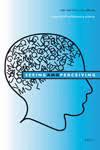Multisensory integration enhances coordination: The necessity of a phasing matching between cross-modal events and movements
引用次数: 0
Abstract
Recent research revealed what substrates may subserve the fascinating capacity of the brain to put together different senses, from single cell to extending networks (see for review, Driver and Noesselt, 2008; Ghazanfar and Schroeder, 2006; Sperdin et al., 2010; Stein and Stanford, 2008), and lead to interesting behavioral benefits in response to cross-modal events such as shorter reaction times, easier detections or more precise synchronization (Diederich and Colonius, 2004; Elliott et al., 2010). But what happens when a combination of multisensory perception and action is required? This is a key issue, since the organization of movements in space–time in harmony with our surrounding environment is the basis of our everdaylife. Surprisingly enough, little is known about how different senses and movement are combined dynamically. Coordination skills allow to test the effectiveness of such a combination, since external events have been shown to stabilize the coordination performance when adequately tuned (Fink et al., 2000). We then tested the modulation of the capacity of participants to produce an anti-symmetric rhythmic bimanual coordination while synchronizing with audio–tactile versus audio and tactile metronomes pacing the coordination from low to high rates of motion. Three condition of metronome structure found to stabilize the anti-symmetric mode have been handled: Simple, Double and Lateralized. We found redundant signal effects for Lateralized metronomes, but not for Simple and Double metronomes, rather explained by neural audio–tactile interactions than by a simple statistical redundancy. These results reflect the effective cortical cooperation between components in charge of the audio–tactile integration and ones sustaining the anti-symmetric coordination pattern. We will discuss the apparent necessity for cross-modal events to match the phasing of movements to greater stabilize the coordination.多感觉整合增强协调:跨模态事件和运动之间的相位匹配的必要性
最近的研究揭示了什么基质可能支持大脑将不同的感觉组合在一起的迷人能力,从单个细胞到扩展网络(见回顾,Driver和Noesselt, 2008;Ghazanfar and Schroeder, 2006;Sperdin et al., 2010;Stein和Stanford, 2008),并且在响应跨模态事件时导致有趣的行为益处,例如更短的反应时间,更容易检测或更精确的同步(Diederich和Colonius, 2004;Elliott et al., 2010)。但是,当需要多感官知觉和行动的结合时会发生什么呢?这是一个关键问题,因为与我们周围环境和谐相处的时空运动组织是我们日常生活的基础。令人惊讶的是,人们对不同的感觉和运动是如何动态结合的知之甚少。协调技能允许测试这种组合的有效性,因为外部事件已被证明在适当调整时可以稳定协调性能(Fink et al., 2000)。然后,我们测试了参与者产生反对称有节奏的双手协调能力的调节,同时与听觉和触觉节拍器同步,从低到高的运动速率调节协调。研究了稳定反对称模的节拍器结构的三种条件:单一化、双化和偏化。我们发现了侧向节拍器的冗余信号效应,而不是简单节拍器和双节拍器,而是通过神经听觉触觉相互作用而不是简单的统计冗余来解释。这些结果反映了负责听觉-触觉整合的成分和维持反对称协调模式的成分之间有效的皮层合作。我们将讨论跨模态事件的明显必要性,以匹配运动的相位,以更大程度地稳定协调。
本文章由计算机程序翻译,如有差异,请以英文原文为准。
求助全文
约1分钟内获得全文
求助全文

 求助内容:
求助内容: 应助结果提醒方式:
应助结果提醒方式:


